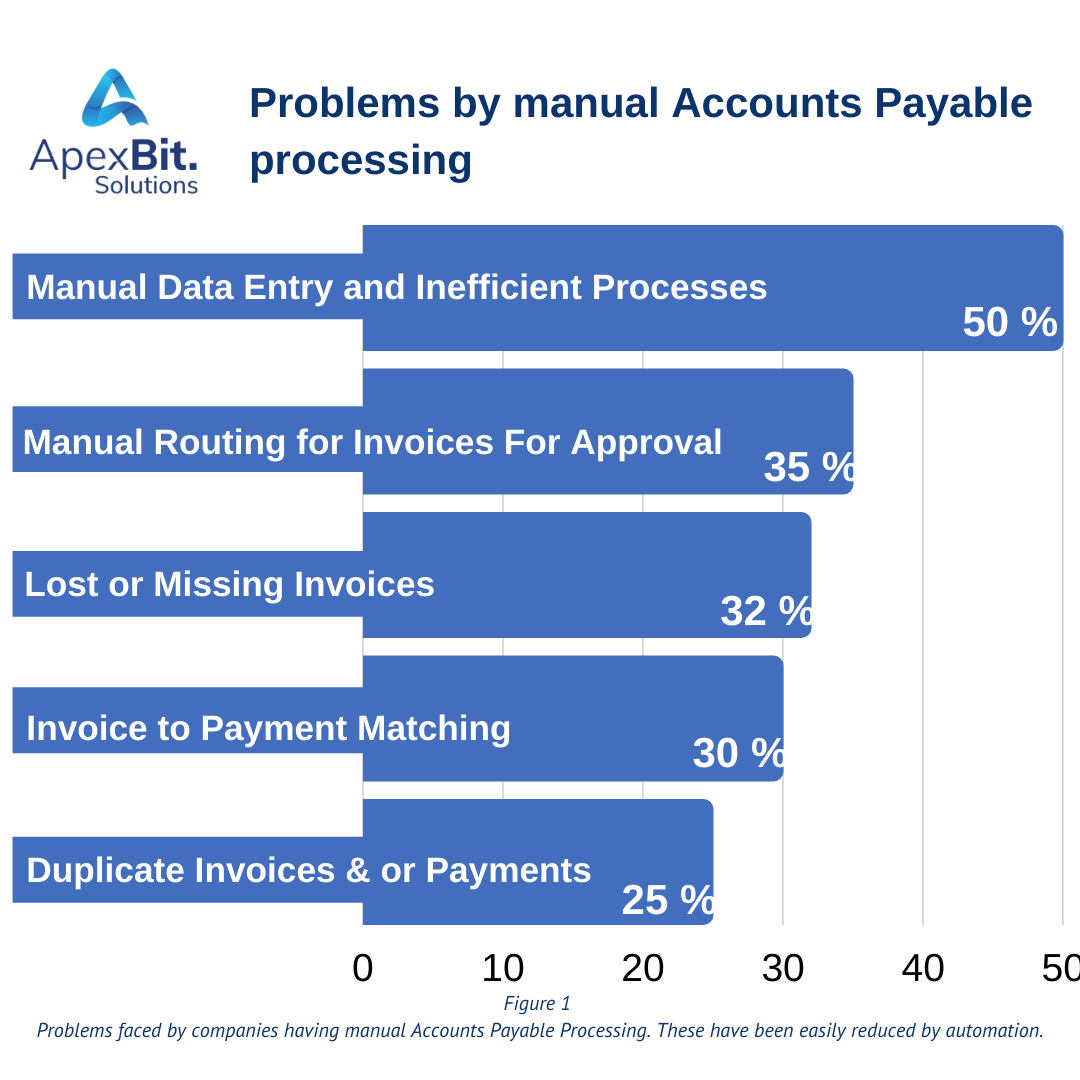Why Accounts Payable Automation a key game changer to the success of Mid-Size Businesses?
The current tools required to optimize and automate Accounts Payable (AP) are designed to accommodate the objectives and challenges of larger enterprises. As a result, small to mid-sized enterprises, with annual revenue ranging from $1 Million to $100 Million, are left with limited options. They are more than often reduced to patching together a series of disparate tools, to address the issue. These strategies have limited advantages. Primarily companies use a method to minimize the data entry job to a single pain point.
Managing Accounts Payable (AP) is a costly and tedious process that requires accuracy and regularity. The Automation of Account Payables provides for a simple yet effective way to manage the AP while cutting down on back-office costs and manual errors.
The real advantages of a completely integrated and controlled AP system, though, go far beyond an optimal data entry system. AP Automation guarantees rigorous supervision, simpler authorizations, strategic transfers, and access to transactional data in real-time. Thus, financial practitioners will take quick and optimal decisions for the bottom line of their company.
With the present-day advancements, automation technology has caught up to the specific needs of SMEs. They are no longer deprived of the advantages of an efficient and mature AP state. Robust AP technologies and systems to serve the needs of a mid-size business are now available. They also provide efficiency gains and control enhancement functionality to optimize the results.
Mid-sized firms already enjoying the benefits of AP Automation
Some have just entered this sphere while some others are still stuck with erroneous and expensive manual processes. However, given the advantages and effectiveness of the automating solutions more and more firms are steadily integrating these solutions in their daily operations ERP (Enterprise Resource Planning).
Front Runners
Many firms have digitized the maximum proportions of their invoices. These are the front-runners in AP Automation management. They use cloud-based automation solutions that ensure accuracy in financial statements, reduction in fraudulence and embezzlements, freedom from manual errors, and cost-efficiency.
Followers
Next comes the followers, these firms have done partial digitization of the invoices and continue to have a decent percentage of paper invoices as well. Such organizations do not have a well structured and functional automated AP workflow. At most, they have adopted elementary automating solutions such as an invoice registering tool, e-payment tools, etc..
Beginners
There are, still, some firms that are purely manual-labor intensive and have little or no automation. They are dependent on human-driven processes to manage their AP. These are the beginners and they undertake massive paperwork, manual entry of invoices, and book-keeping. Such firms are prone to human error and bias at multiple levels and processes. Fraudulence, an error of omissions and commissions, delay in payments, and distorted recording to the accounts payable is also seen
The manual recording and discharging of accounts payable result in discrepancies with the supplier’s and vendors’ portfolios, delays in payments, and lower early-payment discount benefits.
Current Scenario
While the front-runners can reap the maximum benefits of the AP automation, the followers avail lesser benefits and aren’t as efficient as the firms which have completely automated the process of AP management. The beginners are yet to start benefiting from the automation technology and are still struggling with the drawbacks of manual AP management processes.
Recent market analysis shows that 42 % of the SMEs are still at the Beginner’s level in terms of AP automation while less than 10% makes it to the Front-Runner’s level. It has been observed, the overall cost of managing the accounts payable reduces concerning the increase in the automation levels of its management. (Figure 1)

How to make a high-rewarding investment in AP automation?
The investment in automation technology, like any other, is made post-measuring a bankable ROI. It involves strategic-level decision making. An assured high-percentage return on investment is crucial for Small and Medium-sized businesses as they have fewer resources and small-irregular inflows of investment. It becomes a key issue for SMEs to analyze and invest in the most rewarding automation technology avenues.

Here is a detailed check-list for SMEs on what to look, while investing in an AP automation system :
Compatibility with the existing ERP
The operations and administrations of SMEs are mostly inter-woven in a well-developed Enterprise Resource Planning System. AP management is also an integrated part of this system. The new AP automation technology should be compatible with the existing EPR system and should complement its working. A complete revamping and re-organizing of existing workflow would disrupt the financial and functional soundness of the SMEs. Hence, while evaluating various alternatives, an SME should look for EPR compatibility and integrating features of the AP automation technology.
Establishing an analyzed business case for the adoption of AP automation
Before adopting the AP automation management system, the firm should assess the current position of their payable levels. the current cost incurred in the entire AP management process, and the time consumed should also be considered. This helps SMEs in deciding the end objective of adopting AP automation. Increased visibility, reduced back-office costs, and elimination of manual errors are some of the benefits of AP automation that make a strong case for its adoption.
A ‘firm-friendly’ solution provider
The SMEs investing in AP automation solutions should be cautious while choosing a solution provider. Many solution providers offer AP automation services. A firm should go for a solution provider who ensures a tailor-made option. It should be customized to fulfill the requirements of the firm and takes into account all its limitations. Few of them are size, space, turnover, existing technical infrastructure, and feasibility. SMEs should look for service providers who provide ‘firm-friendly’ automation solutions after assessing the internal and external environment in which the firm operates.
For the efficient and smooth running of the businesses, automation of repetitive and regular tasks is a must. This helps firms to reduce huge costs in terms of resources, monetary, human, and time. Hence, a necessity to survive the competition. Management of Accounts Payable is one such task, making it’s automation highly recommended.








Recent Comments